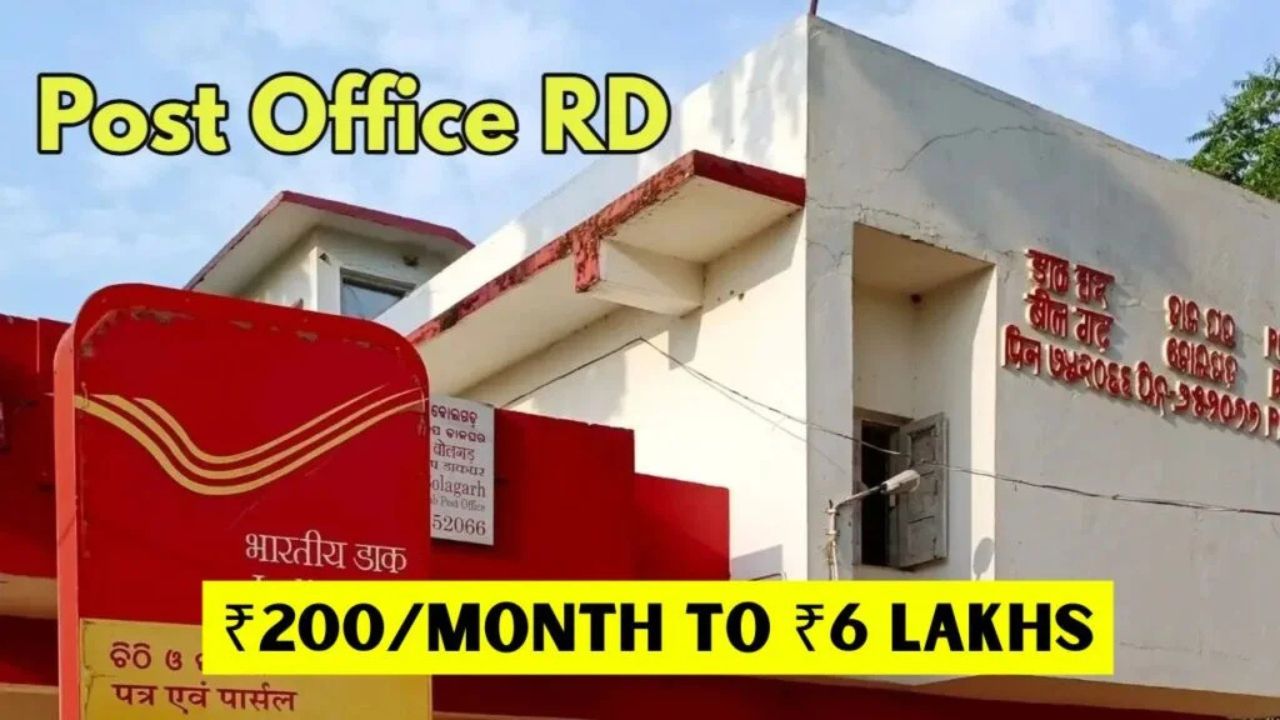When it comes to safe, long-term savings in India, the Post Office Recurring Deposit (RD) Scheme stands out as a reliable and popular choice. With minimal investment requirements, assured returns, and government backing, this scheme empowers even small savers to build a significant corpus over time. Believe it or not, by investing just ₹200 every month, you can accumulate close to ₹6 lakhs over the long term with discipline and patience.
What is the Post Office Recurring Deposit Scheme?
The Post Office RD is a savings scheme offered by India Post, ideal for individuals who want to deposit a fixed amount every month and earn guaranteed interest. Unlike market-linked investments, this scheme offers fixed returns, which means your capital is not subject to stock market fluctuations. It is perfect for conservative investors or those saving for future goals like education, marriage, or an emergency fund.
This scheme comes with a five-year maturity period but can be extended up to 10 years. Interest is compounded quarterly, which helps the invested amount grow at a healthy pace over time.
How ₹200 a Month Can Grow Into ₹6 Lakhs
At first glance, ₹200 may seem like an insignificant amount. But when invested regularly over an extended period, it can snowball into a substantial fund thanks to compounding. Let’s break it down. Suppose you invest ₹200 every month in a Post Office RD for a period of 10 years and renew it once after the initial 5-year term. Assuming an interest rate of 6.7% per annum (subject to change based on government revisions), the power of compound interest over two terms can help your savings approach ₹6 lakhs.
This growth comes not from high-risk returns but from the sheer discipline of saving regularly and letting time multiply your money. It’s a classic example of how “slow and steady” truly wins the financial race.
Benefits of Investing in Post Office RD
One of the biggest advantages of the Post Office RD is its safety. Being a government-backed scheme, it guarantees capital protection along with assured returns. This makes it a trusted option for senior citizens, homemakers, and risk-averse individuals. Additionally, the scheme is available across all post offices in India, making it highly accessible even in rural areas.
Another advantage is the low entry barrier. With just ₹100 as the minimum deposit, and no upper limit (in multiples of ₹10), the scheme offers flexible options for all kinds of savers. The RD account can also be opened jointly, and minor accounts can be opened by parents on behalf of their children, making it a great tool for financial inclusion and family savings.
Interest Rates and Compounding Explained
Interest on Post Office RD is compounded quarterly. This means that the interest earned every three months is added to the principal, and in the next quarter, interest is calculated on this new amount. Over time, this cycle helps your investment grow faster than simple interest schemes.
Though the interest rate is subject to periodic revision by the government, it has historically remained stable, generally ranging between 5.8% and 7.3% depending on the prevailing economic conditions. The current rate (as of FY 2024–25) is approximately 6.7% annually.
Is the Post Office RD Scheme Right for You?
The Post Office RD is perfect for individuals who want to cultivate the habit of saving regularly without taking risks. It suits students, newly employed individuals, retirees, or anyone with a fixed monthly budget. If you’re looking to accumulate a corpus without the anxiety of market volatility, this scheme delivers peace of mind.
However, for those who aim for higher returns and are comfortable with moderate risks, mutual funds or equity SIPs may be more suitable. But as part of a balanced portfolio, a Post Office RD adds safety and stability.
How to Open a Post Office RD Account
Opening a Post Office RD account is simple. You can visit your nearest post office with basic KYC documents such as Aadhaar, PAN card, and a passport-sized photo. A savings account with India Post is also required for seamless transactions. Digital account opening and deposits are increasingly supported via the India Post Payments Bank (IPPB) app and website, adding convenience for tech-savvy users.
You can also opt for auto-debit from your post office savings account, ensuring that your monthly contribution happens without any delay or manual effort.
Tax Implications You Should Know
While the interest earned on Post Office RD is fully taxable under the Income Tax Act, there is no tax deduction available under Section 80C for the invested amount. Interest is added to your income and taxed as per your applicable slab rate. TDS is not deducted automatically unless the interest exceeds ₹40,000 in a financial year.
If your total annual income is below the taxable limit, you can submit Form 15G or 15H to avoid TDS deduction.
Final Thoughts: Start Small, Think Big
The Post Office Recurring Deposit is a perfect blend of accessibility, safety, and steady returns. For just ₹200 a month, you can develop a lifelong savings habit and create a corpus that touches ₹6 lakhs over a long duration. This plan doesn’t promise overnight riches—but it does offer guaranteed growth, which is often more valuable in uncertain financial times.
If you’ve been waiting for the “right time” to start saving, let this be your cue. Because the earlier you start, the stronger your financial foundation becomes.




